
Grow Your Own Delicious Chocolate (Theobroma cacao)
By Laurelynn Martin and Byron Martin
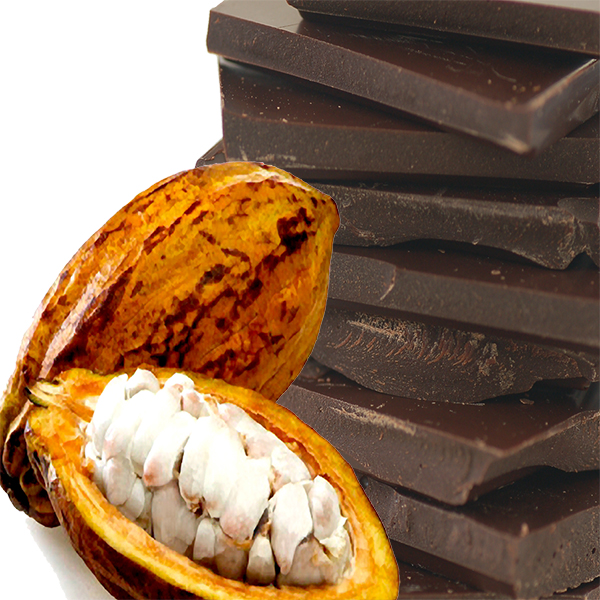 |
|
Cacao pods and chocolate bars |
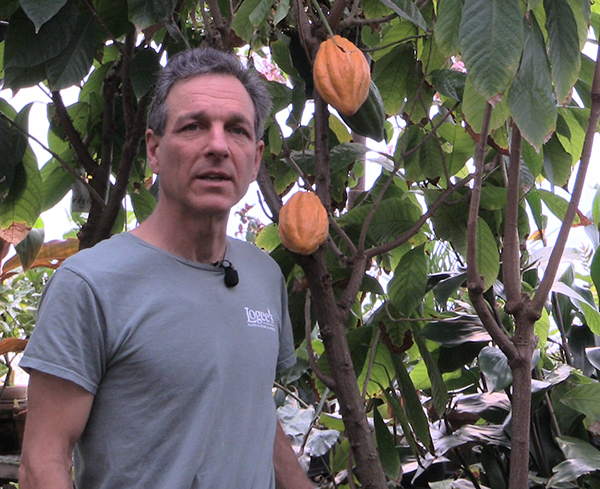 |
|
Logee’s Chocolate Tree |
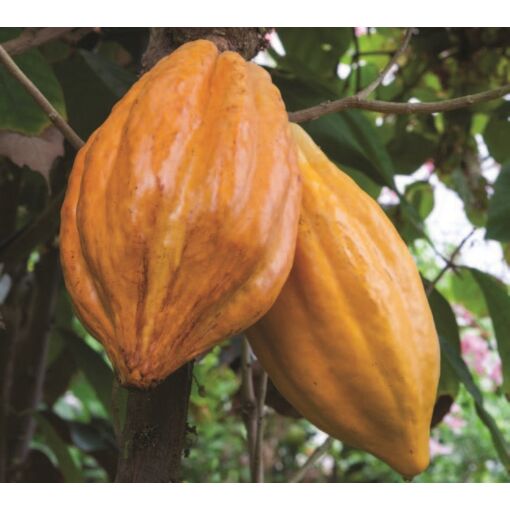 |
|
|
Chocolate, originally found in South America, is known as “The Food of the Gods.” The first record of chocolate or cocoa dates back to 1900 BC and the Aztec people used chocolate seeds as a form of currency. Chocolate was served as a bitter beverage in the early days and was believed to be an aphrodisiac and have super powers. Later in Spain, and throughout Europe, sugar was added to the beverage and hot chocolate became a preferred drink even surpassing coffee. Chocolate is well loved today not only as a beverage but also when it’s made into candy bars and used in baking. Today, the health craze has brought us back to its natural form of consuming organic raw cacao nibs known for their antioxidant compounds called polyphenols as well as other health benefits. Growing your own chocolate tree is a relatively easy undertaking if you follow a few cultural requirements.
Tree Size
The chocolate tree is a small-to-medium sized tree and grows as an understory species in the rainforest so it tolerates and even thrives under dappled light or partial sun conditions.
Container Grown Chocolate
As a cultivated plant for the container gardener, the chocolate tree is easy to grow but it needs a bit of room to produce fruit. Plants are generally grown from seed and need 3-4 years to reach fruiting size. This means the tree will be 5-6’ in height with a trunk caliber of 1-1/2 to 2” in diameter. So to grow chocolate inside, a large, sunny and warm spot is needed.
Light Requirements
A chocolate plant needs a warm growing area that stays, for the most part, above 60°F, preferably with higher daytime temperatures and good quality light with some direct sunlight. This would be a large, south-facing window, a sunroom, greenhouse or conservatory. Chocolate plants also benefit from being grown outside during the summer months.
Flowering
The flowers form along the woody trunks and branches in clusters from spring through fall. Some flowers may pop their heads out in the winter as well with good growing conditions.
Fruit
Fruit set occurs once the tree has reached a size that’s large enough to fruit. This usually happens at 5-6’ in height. Initially, the potted plant will produce 3-4 chocolate pods. The fruit develops as a small green pod and grows for many months until it reaches maturity. Mature fruit is anywhere from 4 to 8” long, at which time it ripens to a yellow or yellow-orange color. The ripening process takes 5-6 months. After this, it is ready to pick.
Pruning
Once or twice a year, for container grown cocoa trees, prune out the top of the plant to maintain height. It grows rapidly in the summer, especially when moved outside for the growing season. It can easily add an extra 2-3’ of height during the summer and you might need to prune the top so the plant will fit in the designated indoor growing area for the winter months. If more room is available, then the plant can be allowed to grow taller, which in turn, will produce a stronger plant with more fruiting potential.
Insects/Disease
For the most part, insects do not bother with the chocolate tree. We do see aphids on the soft growth at times and if a mealybug infestation is nearby, they can get onto the plant. However, container plants are susceptible to root disease so it needs to be grown in such a way as to mitigate disease.
How to prevent Root Disease
We recommend growing chocolate in clay pots and allowing the surface of the potting media to dry down between waterings. Also, fertilize at moderate levels during the growing season and discontinue your fertilization program in the winter. This helps to prevent root disease. Winter is a time to maintain your plants and keep them healthy not put on new soft growth. Unless optimal growing conditions with light, warmth and day length are present it is best to simply focus on getting your chocolate plant through the winter with healthy roots.
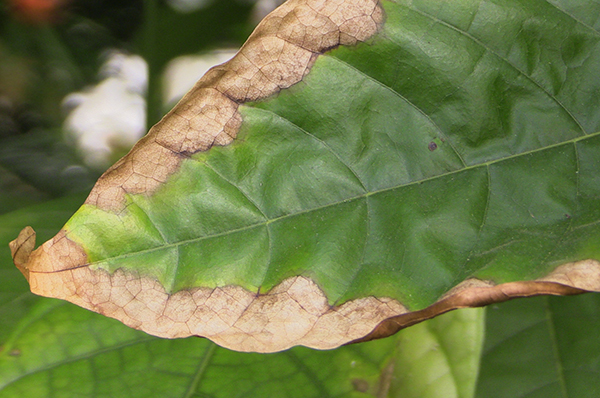 |
|
Leaf Edge Burn |
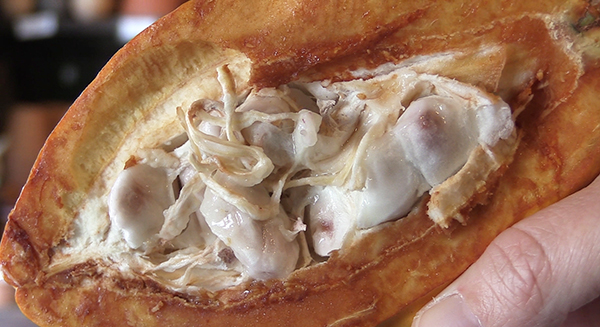 |
|
Open Cocoa Pod |
Fertilize
Chocolate plants need to be fertilized with a balanced fertilizer throughout their growing season, spring to fall.
Do not over feed. A feeding schedule of every two weeks with a soluble fertilizer or top dressing with an organic granular every 6 weeks is sufficient.
Leaf Edge Burn
One cultural issue that persists is leaf edge burn or the browning of the leaf tips and edges. This happens on the older leaves and, as far as we know, is part of the growing cycle of the plant. All cacao trees that we have observed, in many different growing environments, have this symptom on the older leaves. For the most part you can ignore it; the trees will still produce fruit and new growth will refresh the look of the plant in spring.
Soil
Most standard potting mixes are fine for the chocolate plant. It needs good drainage and a pH of 5 to 6 works well.
The thrill of growing your own chocolate fruit and watching them ripen on your tree can be a rewarding experience. Who knows? It may inspire you to become a chocolatier.
Click here to see our Cocoa Plants

